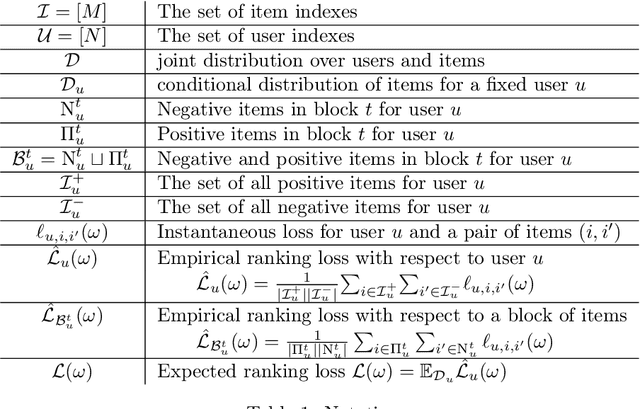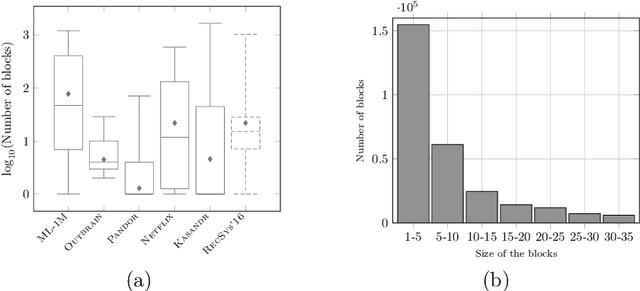Massih-Reza Amini
AMA
AI Agentic Vulnerability Injection And Transformation with Optimized Reasoning
Aug 28, 2025Abstract:The increasing complexity of software systems and the sophistication of cyber-attacks have underscored the critical need for effective automated vulnerability detection and repair systems. Traditional methods, such as static program analysis, face significant challenges related to scalability, adaptability, and high false-positive and false-negative rates. AI-driven approaches, particularly those using machine learning and deep learning models, show promise but are heavily reliant on the quality and quantity of training data. This paper introduces a novel framework designed to automatically introduce realistic, category-specific vulnerabilities into secure C/C++ codebases to generate datasets. The proposed approach coordinates multiple AI agents that simulate expert reasoning, along with function agents and traditional code analysis tools. It leverages Retrieval-Augmented Generation for contextual grounding and employs Low-Rank approximation of weights for efficient model fine-tuning. Our experimental study on 116 code samples from three different benchmarks suggests that our approach outperforms other techniques with regard to dataset accuracy, achieving between 89\% and 95\% success rates in injecting vulnerabilities at function level.
Multi-Label Contrastive Learning : A Comprehensive Study
Nov 27, 2024



Abstract:Multi-label classification, which involves assigning multiple labels to a single input, has emerged as a key area in both research and industry due to its wide-ranging applications. Designing effective loss functions is crucial for optimizing deep neural networks for this task, as they significantly influence model performance and efficiency. Traditional loss functions, which often maximize likelihood under the assumption of label independence, may struggle to capture complex label relationships. Recent research has turned to supervised contrastive learning, a method that aims to create a structured representation space by bringing similar instances closer together and pushing dissimilar ones apart. Although contrastive learning offers a promising approach, applying it to multi-label classification presents unique challenges, particularly in managing label interactions and data structure. In this paper, we conduct an in-depth study of contrastive learning loss for multi-label classification across diverse settings. These include datasets with both small and large numbers of labels, datasets with varying amounts of training data, and applications in both computer vision and natural language processing. Our empirical results indicate that the promising outcomes of contrastive learning are attributable not only to the consideration of label interactions but also to the robust optimization scheme of the contrastive loss. Furthermore, while the supervised contrastive loss function faces challenges with datasets containing a small number of labels and ranking-based metrics, it demonstrates excellent performance, particularly in terms of Macro-F1, on datasets with a large number of labels.
A Unified Contrastive Loss for Self-Training
Sep 11, 2024Abstract:Self-training methods have proven to be effective in exploiting abundant unlabeled data in semi-supervised learning, particularly when labeled data is scarce. While many of these approaches rely on a cross-entropy loss function (CE), recent advances have shown that the supervised contrastive loss function (SupCon) can be more effective. Additionally, unsupervised contrastive learning approaches have also been shown to capture high quality data representations in the unsupervised setting. To benefit from these advantages in a semi-supervised setting, we propose a general framework to enhance self-training methods, which replaces all instances of CE losses with a unique contrastive loss. By using class prototypes, which are a set of class-wise trainable parameters, we recover the probability distributions of the CE setting and show a theoretical equivalence with it. Our framework, when applied to popular self-training methods, results in significant performance improvements across three different datasets with a limited number of labeled data. Additionally, we demonstrate further improvements in convergence speed, transfer ability, and hyperparameter stability. The code is available at \url{https://github.com/AurelienGauffre/semisupcon/}.
Unified Framework for Neural Network Compression via Decomposition and Optimal Rank Selection
Sep 05, 2024



Abstract:Despite their high accuracy, complex neural networks demand significant computational resources, posing challenges for deployment on resource-constrained devices such as mobile phones and embedded systems. Compression algorithms have been developed to address these challenges by reducing model size and computational demands while maintaining accuracy. Among these approaches, factorization methods based on tensor decomposition are theoretically sound and effective. However, they face difficulties in selecting the appropriate rank for decomposition. This paper tackles this issue by presenting a unified framework that simultaneously applies decomposition and optimal rank selection, employing a composite compression loss within defined rank constraints. Our approach includes an automatic rank search in a continuous space, efficiently identifying optimal rank configurations without the use of training data, making it computationally efficient. Combined with a subsequent fine-tuning step, our approach maintains the performance of highly compressed models on par with their original counterparts. Using various benchmark datasets, we demonstrate the efficacy of our method through a comprehensive analysis.
Classification Tree-based Active Learning: A Wrapper Approach
Apr 15, 2024Abstract:Supervised machine learning often requires large training sets to train accurate models, yet obtaining large amounts of labeled data is not always feasible. Hence, it becomes crucial to explore active learning methods for reducing the size of training sets while maintaining high accuracy. The aim is to select the optimal subset of data for labeling from an initial unlabeled set, ensuring precise prediction of outcomes. However, conventional active learning approaches are comparable to classical random sampling. This paper proposes a wrapper active learning method for classification, organizing the sampling process into a tree structure, that improves state-of-the-art algorithms. A classification tree constructed on an initial set of labeled samples is considered to decompose the space into low-entropy regions. Input-space based criteria are used thereafter to sub-sample from these regions, the total number of points to be labeled being decomposed into each region. This adaptation proves to be a significant enhancement over existing active learning methods. Through experiments conducted on various benchmark data sets, the paper demonstrates the efficacy of the proposed framework by being effective in constructing accurate classification models, even when provided with a severely restricted labeled data set.
Exploring Contrastive Learning for Long-Tailed Multi-Label Text Classification
Apr 12, 2024Abstract:Learning an effective representation in multi-label text classification (MLTC) is a significant challenge in NLP. This challenge arises from the inherent complexity of the task, which is shaped by two key factors: the intricate connections between labels and the widespread long-tailed distribution of the data. To overcome this issue, one potential approach involves integrating supervised contrastive learning with classical supervised loss functions. Although contrastive learning has shown remarkable performance in multi-class classification, its impact in the multi-label framework has not been thoroughly investigated. In this paper, we conduct an in-depth study of supervised contrastive learning and its influence on representation in MLTC context. We emphasize the importance of considering long-tailed data distributions to build a robust representation space, which effectively addresses two critical challenges associated with contrastive learning that we identify: the "lack of positives" and the "attraction-repulsion imbalance". Building on this insight, we introduce a novel contrastive loss function for MLTC. It attains Micro-F1 scores that either match or surpass those obtained with other frequently employed loss functions, and demonstrates a significant improvement in Macro-F1 scores across three multi-label datasets.
Pool-Based Active Learning with Proper Topological Regions
Oct 02, 2023Abstract:Machine learning methods usually rely on large sample size to have good performance, while it is difficult to provide labeled set in many applications. Pool-based active learning methods are there to detect, among a set of unlabeled data, the ones that are the most relevant for the training. We propose in this paper a meta-approach for pool-based active learning strategies in the context of multi-class classification tasks based on Proper Topological Regions. PTR, based on topological data analysis (TDA), are relevant regions used to sample cold-start points or within the active learning scheme. The proposed method is illustrated empirically on various benchmark datasets, being competitive to the classical methods from the literature.
Deep Learning with Partially Labeled Data for Radio Map Reconstruction
Jun 07, 2023



Abstract:In this paper, we address the problem of Received Signal Strength map reconstruction based on location-dependent radio measurements and utilizing side knowledge about the local region; for example, city plan, terrain height, gateway position. Depending on the quantity of such prior side information, we employ Neural Architecture Search to find an optimized Neural Network model with the best architecture for each of the supposed settings. We demonstrate that using additional side information enhances the final accuracy of the Received Signal Strength map reconstruction on three datasets that correspond to three major cities, particularly in sub-areas near the gateways where larger variations of the average received signal power are typically observed.
Generalization bounds for learning under graph-dependence: A survey
Mar 25, 2022



Abstract:Traditional statistical learning theory relies on the assumption that data are identically and independently generated from a given distribution (i.i.d.). The independently distributed assumption, on the other hand, fails to hold in many real applications. In this survey, we consider learning settings in which examples are dependent and their dependence relationship can be characterized by a graph. We collect various graph-dependent concentration bounds, which are then used to derive Rademacher and stability generalization bounds for learning from graph-dependent data. We illustrate this paradigm with three learning tasks and provide some research directions for future work. To the best of our knowledge, this is the first survey on this subject.
Learning over No-Preferred and Preferred Sequence of Items for Robust Recommendation (Extended Abstract)
Feb 26, 2022



Abstract:This paper is an extended version of [Burashnikova et al., 2021, arXiv: 2012.06910], where we proposed a theoretically supported sequential strategy for training a large-scale Recommender System (RS) over implicit feedback, mainly in the form of clicks. The proposed approach consists in minimizing pairwise ranking loss over blocks of consecutive items constituted by a sequence of non-clicked items followed by a clicked one for each user. We present two variants of this strategy where model parameters are updated using either the momentum method or a gradient-based approach. To prevent updating the parameters for an abnormally high number of clicks over some targeted items (mainly due to bots), we introduce an upper and a lower threshold on the number of updates for each user. These thresholds are estimated over the distribution of the number of blocks in the training set. They affect the decision of RS by shifting the distribution of items that are shown to the users. Furthermore, we provide a convergence analysis of both algorithms and demonstrate their practical efficiency over six large-scale collections with respect to various ranking measures.
 Add to Chrome
Add to Chrome Add to Firefox
Add to Firefox Add to Edge
Add to Edge